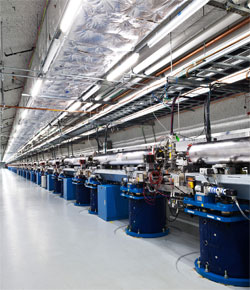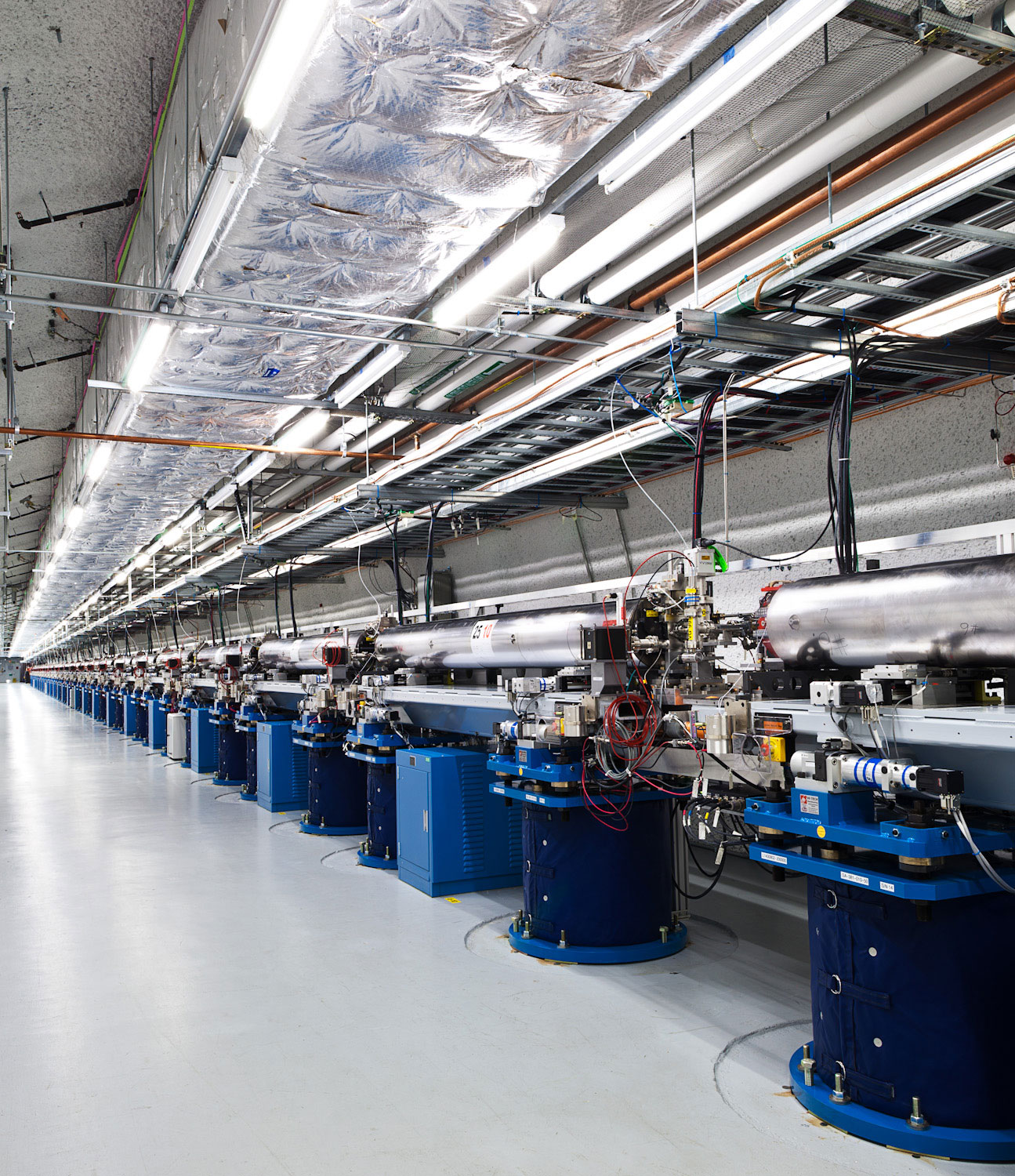The Purest X-Ray Beam
The world’s first x-ray laser is not only a true laser, but it’s an extremely good one, according to measurements reported 30 September in Physical Review Letters. Researchers studying the Linac Coherent Light Source (LCLS) characterized the coherence of the laser–the degree to which the light waves are synchronized–and found that it produces the most coherent x-ray radiation ever measured. With such a high-quality beam, the machine can determine atomic-scale structure of materials at a high level of precision, which will be useful in fields as diverse as drug discovery, materials engineering, and archaeology.
Since the 1957 invention of the maser–the microwave predecessor to the visible-light laser–researchers have been developing lasers with ever shorter wavelengths and applying them to a growing variety of purposes. But making lasers with short wavelengths is challenging. For a light source to be declared a laser, the majority of its photons must be coherent–oscillating in synch. A high coherence means that the light will diffract more precisely, which for an x-ray beam means sharper images of atomic structure. Laser beams also have various patterns, or modes, of oscillation, just as strings and drumheads do, and the ideal beam has all of its photons contributing to a single mode.
When LCLS at SLAC National Accelerator Laboratory in Palo Alto, California, began operating in 2009, the evidence for laser light was the presence of bright, monochromatic, focused, x-ray pulses. However, until now, estimates of the coherence of the light were based on simulations.
To demonstrate that the LCLS is indeed coherent, a research team led by Ivan Vartanyants, of Germany’s DESY synchrotron lab in Hamburg and the National Research Nuclear University in Moscow, used a form of the classic double-slit experiment. They shined the laser pulses through a pair of pinhole apertures and observed the usual pattern of bright and dark bands produced by coherent light. The x rays vaporize most samples, so for pinholes, the team used a silicon sheet containing hundreds of “single-use” pinhole pairs with different spacings and focused the beam onto a new pair after each beam pulse.
The team observed very high contrast between the brightest and darkest regions of the pattern–high “visibility”–for small aperture separations. As the aperture spacing increased, the pattern received contributions from more widely separated photons in the beam, and without perfect coherence, the visibility decreased. By measuring this decrease, the team found the coherence length–the distance over which the photons stay coherent. Their result was 16.8 microns, comparable to the width of the beam.
The researchers also measured the degree to which the beam is monochromatic, which is equivalent to the coherence time. For large pinhole separations, they examined the visibility at the edge of the pattern, where the light travel distance from the two pinholes has the maximum difference, and any wavelength discrepancies would show up most clearly. They measured a coherence time of 0.55 femtoseconds, which means that the pulse was effectively the same color and intensity for that long, equivalent to a distance of about 150 nanometers along the beam direction. So a 150-nanometer-deep sample can be illuminated with coherent light all at once.
Having this level of coherence means that the majority of the photons are confined to a single spatial mode. About 78 percent of the photons were in the dominant mode, compared with less than 1 percent in a typical x-ray synchrotron source. “It was a surprise that our measured values were so close to theoretical estimates made for LCLS,” says Vartanyants, since the machine is so complex. Despite the technical challenges, Jerry Hastings of the Stanford Linear Accelerator Center (SLAC), who wasn’t involved in the study, says the results show that researchers have the technology to measure detailed properties of the LCLS beam.
–David Harris
David Harris is a freelance science writer in Palo Alto, California.





